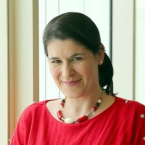When targets are set to overcome malnutrition, it can be easy to think that it does not apply here in the UK. As one of the richest countries on Earth, how can this be a problem for us? The reality is the prevalence of anaemia has remained stubbornly stagnant affecting 11.1 per cent of women of childbearing age and 16.5 per cent during pregnancy, according to the latest World Health Organization (WHO) figures.
The impact of anaemia should not be underestimated. It leaves many feeling exhausted, weak, and dizzy. Palpitations and breathlessness can occur. Some will experience hair loss, headaches, irritability, and poor concentration. Some may feel cold, appear paler than normal or have unusual cravings for soil or ice. The mental and physical affects can compromise a woman or young person’s ability to participate in work, school, family, and social activities. Left untreated it can cause complications during pregnancy and childbirth.
Many symptoms of anaemia can be dismissed as the result of stress or a busy lifestyle, without people realising there can be a physical reason for the way they feel. In our professional and private lives, by raising awareness of the signs and symptoms of anaemia amongst our patients, family, and friends we can empower women to seek healthcare advice.
How can we find ways to contribute to reaching the 50 per cent reduction goal? As a Patient Blood Management Practitioner, I have been able to apply my midwifery background to review and update obstetric anaemia toolkits (NHS Blood and Transplant) and e-learning modules, available to all health care professionals. As a nurse working with blood donors, I can give healthy eating advice for iron rich foods.
Patient blood management (PBM) recognises an individual's blood is a valuable resource that can be optimised to improve health and wellbeing. Preventing, identifying and treating anaemia is one PBM initiative that all nurses and midwives can implement in their practice day to day. PBM awareness week is held in November - use this to highlight the work you have done through the year to help the WHO achieve their target.
How can you use your professional knowledge and platform to improve women’s blood health and wellbeing?


 Share on LinkedIn
Share on LinkedIn




